Inbound Marketing for Nonprofits: Is HubSpot’s Model the Right Fit?
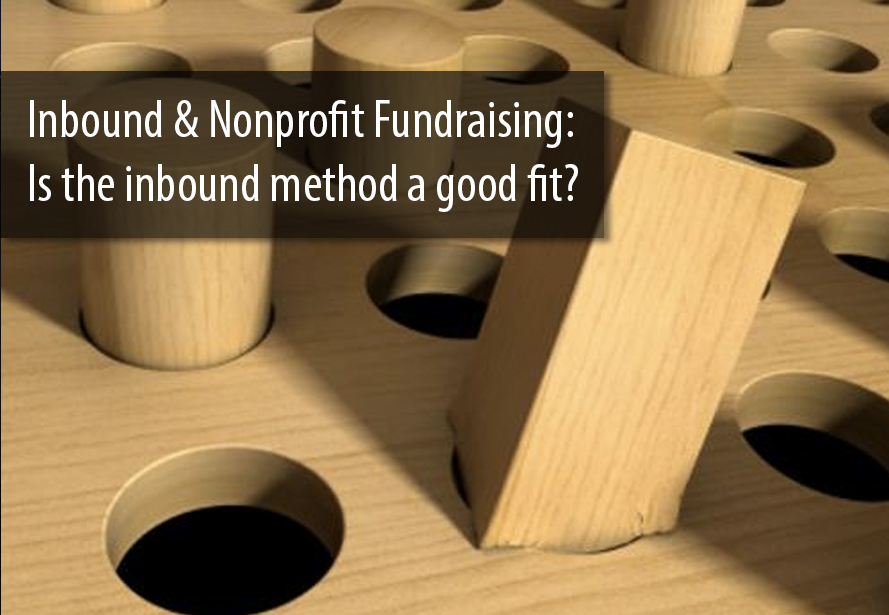
INBOUND MARKETING FOR NONPROFITS: IS HUBSPOT’S MODEL THE RIGHT FIT?
I’m a pretty strong believer in inbound marketing. I’ve seen it work. And I think there’s a lot of potential for leveraging the inbound marketing framework to support the hard work of nonprofit development professionals. But I also think the current HubSpot inbound methodology just doesn’t translate well for nonprofit fundraising.
Essentially, trying to make the HubSpot inbound marketing method fit into nonprofit fundraising is a little like trying to pound a square peg into a round hole.
Here's a a rundown of problems – as well as suggested modifications – on using inbound marketing for nonprofits.
Phase 1: Attract
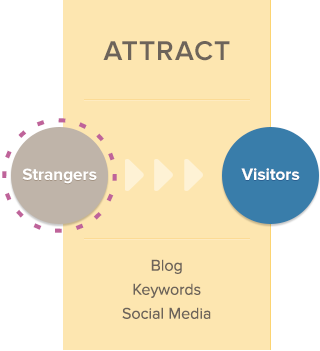
The first stage of the inbound methodology, “attract”, relies on attracting qualified prospects to a business by creating and sharing high-quality, relevant content. This content addresses an ideal customer’s needs, questions and interests as they relate to a business’s industry, products or services. The tools used for this stage include blogging, SEO and social media. So essentially, when buyers turn to the internet with questions, you want them to find your answers in the SERPs.
But the inbound stage of “Attract” is broken for nonprofit fundraising.
Organizations generally don’t attract the majority of their new donors through great SEO and SEM. Sure, you probably have – or should have – brand and mission-related keyword optimizations along with a few Google Grants ads that are targeting donors. Because you’ll have a few new donors trickle in who want to support your cause, but they don’t have a direct URL. Or maybe they know your organization’s mission but not its name.
But it’s unlikely that those new donors discovered your organization or mission through search. Chances are, they had a personal encounter with your nonprofit or your general cause either directly or through a friend or family member. Because of that personal interaction, the individual searched for a related cause to support or searched directly for your organization.
So for the most part, the “attract” tools of SEO and SEM aren’t strong performers for online fundraising.
Now, let’s explore social media. To earn significant web traffic via social media, a nonprofit has to do a whole lot more than any business using inbound. While a business needs to deliver practical information and education (e.g. by way of blog posts and social promotion), a nonprofit has to inspire, provoke and motivate through amazing, mission-driven storytelling.
And when we’re talking about attracting new prospective donors, the average nonprofit often needs more than amazing storytelling. It also needs to connect to the prospective donor on a personal level.
“Attract” Adapted for Nonprofits
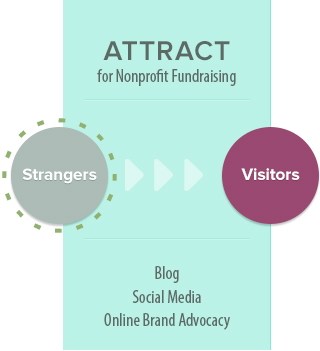
Development teams are not going to attract a lot of new donors through SEO and SEM. But blogging and social media can be pretty powerful tools for telling and sharing those inspirational nonprofit stories.
But I think the “attract” phase for nonprofits needs to be expanded so that it more deeply integrates the personal and interpersonal connections people have with charitable missions. To this end, the inbound “attract” phase for nonprofits should strongly emphasize brand advocacy strategies across social media that help expand mission awareness and improve the success of peer-to-peer fundraising.
Phase 2: Convert
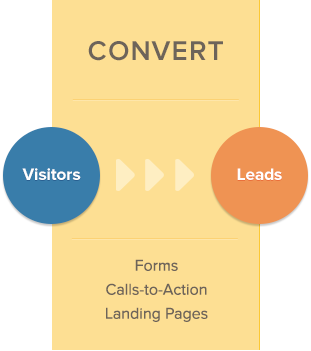
With inbound marketing, the “convert” phase is about converting site visitors from strangers into known leads. Inbound marketers use strategically placed CTAs, forms and optimized landing pages for the conversion process. Lead conversion most often occurs when a site visitor provides her email address and other identifying information in exchange for a premium piece of content such as an eBook or white paper.
This inbound “convert” phase doesn’t translate well to nonprofit fundraising.
This is primarily because eBooks or other free premium content offers generally aren’t relevant or compelling to a prospective donor.
“Convert” Adapted for Nonprofits
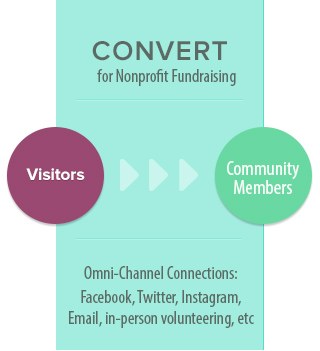
The inbound “convert” phase for nonprofits needs to be much more broad than acquiring a prospective supporter’s email address. Instead, “convert” should be redefined to describe the point at which any new prospective supporter connects with the nonprofit – whether it’s providing an email address as part of an online petition, “Liking” the organization on Facebook, following on Twitter or Instagram, or volunteering in person. Also, rather than calling this person a "lead", I would call this individual a community member.
Essentially, the nonprofit inbound “convert” stage should represent any omni-channel conversion that transitions a person from “stranger” to someone who has connected with the mission. The more “conversion” points, the better.
Phase 3: Close
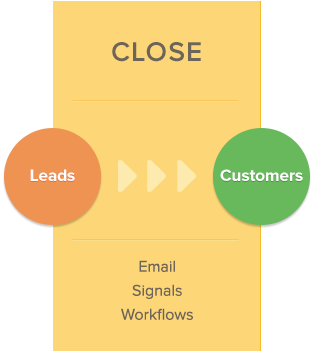
Put simply, the “close” stage of inbound marketing occurs when a business has transformed a lead into a customer. The close phase uses tools such as marketing automation, email, CRM and closed-loop reporting.
Overall, I think “close” adapts pretty well for nonprofit online fundraising.
Marketing automation and workflows can be set up to deliver hyper-personalized content to prospective donors based on their unique connection to and interest in the nonprofit.
Putting workflows, automation and hyper-personalization to work for nonprofit fundraising might look something like this...
Say your nonprofit is focused on family and child services. You have a donor persona – let’s call her Prospective Donor Dana – who is passionate about youth mental health. And you know this because your clickthrough and page view data show she’s highly engaged around your organization’s youth mental health content. So when EOY fundraising comes around, you’ll send Prospective Donor Dana appeals that are related to youth mental health – and not appeals to support the great senior care services that your org also offers.
“Close” Adapted for Nonprofits
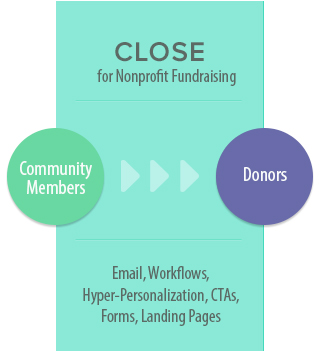
Online fundraisers know first-hand the importance of conversion-optimized donation forms. And they need tools to quickly and easily launch optimized, branded donation forms across campaigns.
So, the the only adaptation I would make to the inbound “close” phase would be to better address this need.
I would take all the great tools and best practices from the inbound “convert” phase, and move them squarely under a “close” phase for nonprofits. This would include tools and tactics such as using highly contextual CTAs (calls-to-action), landing page optimizations, form optimizations, progressive profiling and hyper-personalization.
Phase 4: Delight
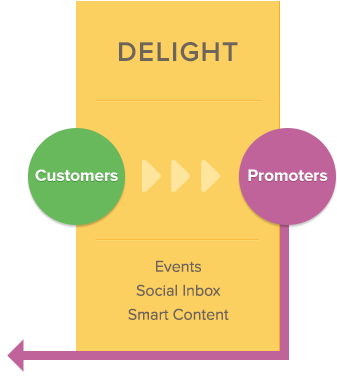
Of all the phases, I think “delight” is the one that translates most directly to nonprofit fundraising. Here’s how HubSpot describes the “delight” phase:
“The Inbound way is all about providing remarkable content to our users, whether they be visitors, leads, or existing customers. Just because someone has already written you a check doesn’t mean you can forget about them! Inbound companies continue to engage with, delight, and (hopefully) upsell their current customer base into happy promoters of the organizations and products they love.”
With a little modification, this sounds a lot like the kind of thing I’d hear in a development office… We need to tell our story. And... It doesn’t matter how big or small the gift is – every donor is important. Or... All our supporters are important – whether they’re giving us gifts of time, talent or treasure.
Not to mention, a fundraiser can never thank a supporter enough. Right?
The inbound “delight” upsell or resell even translates well to nonprofit fundraising. Though, development professionals would call these opportunities sustainer donors, repeat donors, and increasing average gift size.
The “delight” phase also applies well to a new type of nonprofit supporter engagement model that redefines supporter contributions to include contributions of social capital (“mission promoters”) as well as financial support. Nonprofits are delighting and celebrating their cause champions whether they’re donors, volunteers, or digital brand advocates.
While "delight" translates well to nonprofits, I would make some minor updates to the HubSpot inbound model...
"Delight" Adapted for Nonprofts
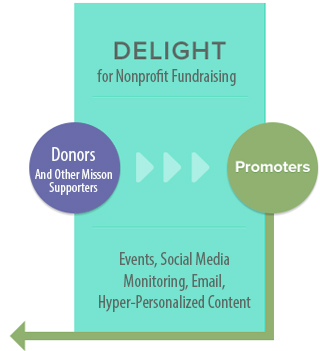
Conclusion
The HubSpot inbound marketing method just doesn’t translate cleanly to nonprofit fundraising purposes. And, while I’m not 100% convinced that my proposed adaptations are the right solution, my hope is to spark a conversation – a conversation that can hopefully lead to a collaborative adaptation of inbound marketing that speaks to the needs and goals of nonprofit development professionals.
So what do you think? How would you adapt the inbound methodology to better serve nonprofit fundraising?
Image by ePublicist via Flickr, licensed under CC BY-ND
